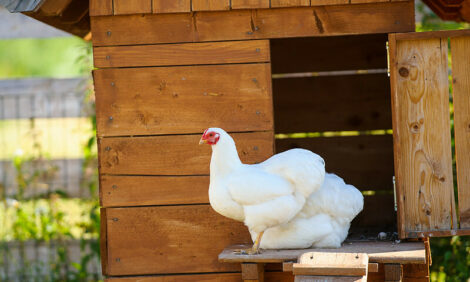



Network of Lab Robotics Stop Livestock Disease
MANHATTAN - The US is preparing to protect itself against any future exotic animal diseases with a network of diagnostic laboratories. K-State is preparing itself also, with a showing of its latest lab robotics to the technicians of tomorrow.In the case of a widespread outbreak, they believe the ability to process thousands of diagnostic samples will be critical to stamping out animal disease in a timely fashion.
The network consists of diagnostic laboratories in Kansas and 44 other states, and each lab has particular capabilities. Besides avian flu, K-State's Veterinary Diagnostic Lab is able to test for exotic Newcastle disease, scrapie, chronic wasting disease, classical swine fever and foot-and-mouth disease. K-State's lab is also the only in Kansas that belongs to the network.
* "Surveillance requires high-throughput capabilities such as robotics and rigorous attention to standard operating procedures" |
|
Dick Oberst, director of molecular diagnostics at K-State.
|
So starting in May, lab leaders charged with training their technicians how to run robotic "real-time" testing equipment are coming to Kansas State University to learn the latest techniques. The training is sponsored by the National Animal Health Laboratory Network, of which K-State's Veterinary Diagnostic Laboratory is a member. The network was created by two U.S. Department of Agriculture agencies together with the American Association of Veterinary Laboratory Diagnosticians.
"When the network first developed in 2002, the U.S. lacked the ability to conduct surveillance testing on the scale many believed would be necessary," said Dick Oberst, director of molecular diagnostics at K-State. "The purpose of the network is to promote early detection, rapid response and testing to demonstrate the appropriate level of recovery from animal disease."
As a member of the network, K-State's Veterinary Diagnostic Laboratory recently began incorporating "high throughput" technologies such as robotics, said Gary Anderson, lab director.
In fact, K-State's Veterinary Diagnostic Laboratory would be first to diagnose avian flu should it come to Kansas. Anderson said five employees are presently certified by the network to perform high-throughput testing on the highly pathogenic form of avian influenza.
"We chose to enhance the molecular diagnostic section of the lab because genetic/ DNA/ molecular technologies are at the foundation of high-throughput capabilities," he said. "The upcoming training is part of a cooperative agreement to develop and validate standard operating procedures for high-throughput testing of important foreign animal diseases."
"The National Animal Health Laboratory Network emphasizes the significance and need for animal disease surveillance, which is critical to public health, food safety, national security and economic viability," Anderson said. "Surveillance requires high-throughput capabilities such as robotics and rigorous attention to standard operating procedures if we are going to obtain accurate results early, quickly and routinely."
A total of six two-day courses to "train the trainer" will be at K-State's Biosecurity Research Institute at Pat Roberts Hall in May, June and July. The sessions will focus on standard use of high-throughput robotics.
Instructors will come from K-State's Veterinary Diagnostic Lab; the U.S. Department of Agriculture's Animal and Plant Health Inspection Service; the Foreign Animal Disease Diagnostic Laboratory, Plum Island, N.Y.; and the National Veterinary Services Laboratories, Ames, Iowa.









